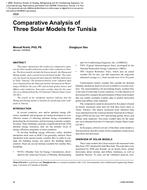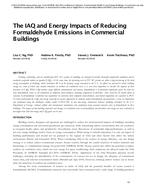Click here to purchase
This is an archived recording of the 2020 online version of the course. The course materials and continuing education credits and/or professional development hours are not available. This course is designed to educate Engineers, Industrial Hygienists, facility owners, and Researchers on the proper methods to design and evaluate laboratory exhaust systems to avoid adverse re-entrainment of the exhaust into nearby air intakes. Improperly designed exhaust systems (even those that meet prescriptive code requirements) can cause chemical and biological contaminant exposure levels to be higher at nearby air intake locations than they are in the actual laboratory; potentially creating unsafe conditions throughout the entire building and neighboring buildings. As part of this course, the attendees will learn basic guidelines on how to properly locate, size, and operate laboratory exhaust systems to minimize the potential for adverse re-entrainment of the exhaust. Implementing these guidelines is critical for maintaining adequate air quality within the laboratory, avoiding both short term health hazards, as well as improving the long-term health and welfare of all of the building occupants. This course will also provide information on how the energy consumption of these systems can be greatly reduced by applying smart technology to the control systems. The energy savings are often on the order of $0.50/cfm per year. These are funds that may then be available to expand the research opportunities, potentially allowing us to avoid or minimize the impact of future pandemics.
Citation: 2020 ASHRAE Online Course
Product Details
- Published:
- 2020
- Units of Measure:
- Dual
- File Size:
- 1 file , 410 MB
- Product Code(s):
- D-2020On-34


